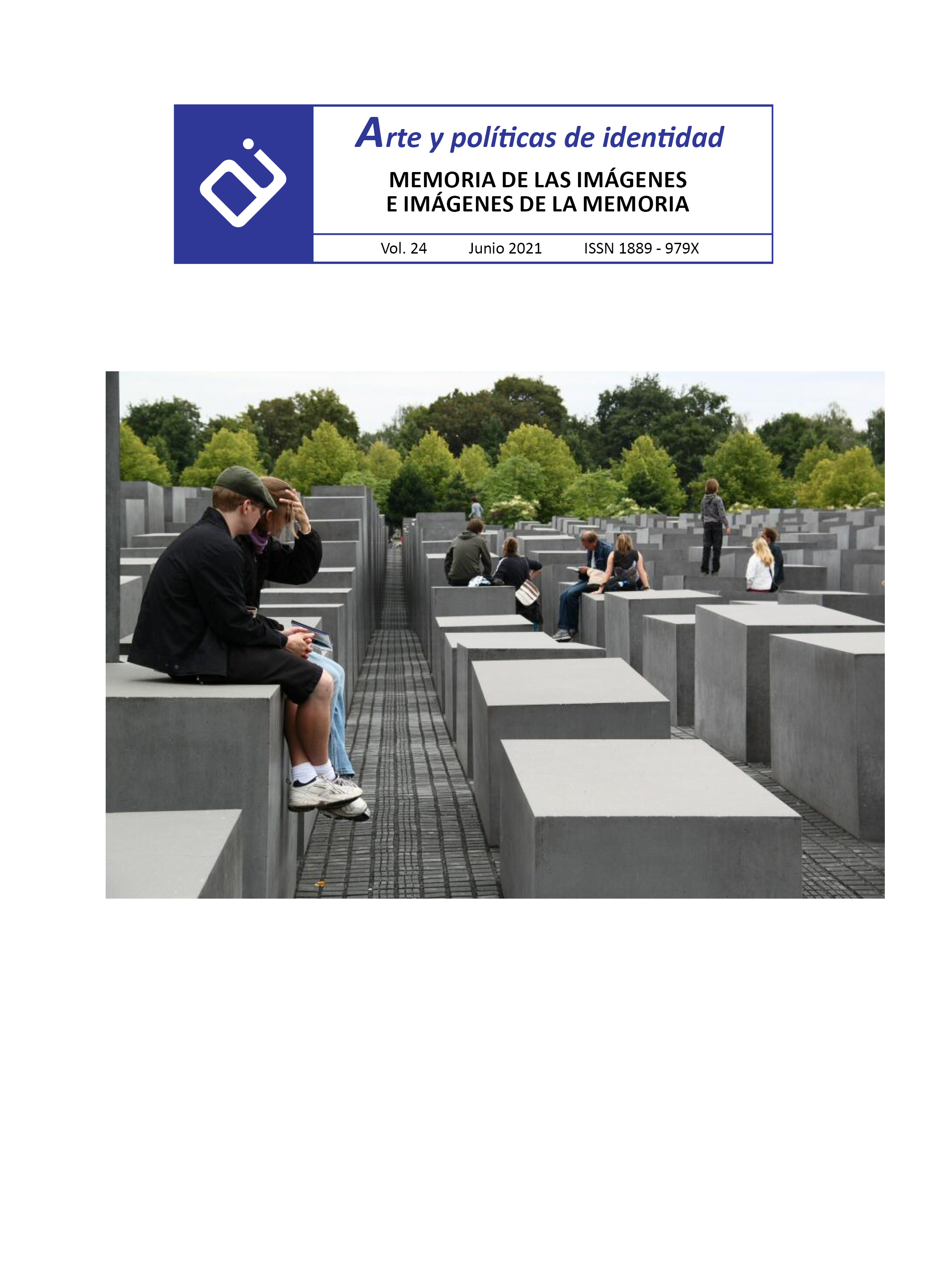Memory of a flooding environment: Iconographic analysis of the image of “The young jumper in front of the bridges”, photograph by Wifredo López Vecino (year ante quem 1969)
Abstract
The rural photographer Wifredo López Vecino has become the graphic witness par excellence of the geomorphological transformation in the sixties of the Vado de Alconetar of the Tajo river as it passed through the province of Caceres. Beyond the graphic document offered by his images, he was able to recreate, in a self-taught way, a very personal poetics of composition, which he applied to his portraits and landscapes. Among the seconds, one of his most emblematic photographs is that of "The Young Jumper before the Bridges", of which this study offers a detailed iconographic analysis in line with other characteristic photographs of his production and with other works of Western artistic tradition and contemporary photography that constitute references that allow us to understand the treatment of people, landscapes and symbols present in the image examined.
Downloads
-
Abstract545
-
pdf (Español (España))455
References
Arévalo, E. M. (2011-2020). Las carreteras de Extremadura (Blog).
Barthes, R. (1990). La cámara lúcida. Notas sobre la fotografía. Barcelona: Paidós.
Benigni, C. (2019). Nino Migliori: Forme del Vero. Milano, Italia: Silvana.
Benlloch Serrano, J., García Cáceres, M. y Vicente, P. (2014). dFoto. Directorio de fondos y colecciones de fotografía en España. Un instrumento para la investigación y preservación de la fotografía. Latente. Revista de Historia y Estética del Audiovisual, 12, 23-31.
Cruz Franco, P. A., Rueda Márquez de la Plata, A., y Cortés Pérez, J. P. (2018). Veinte siglos de Patrimonio de Extremadura en ocho puentes: Documentación digital en las obras públicas. Cáceres, España: Universidad de Extremadura y Junta de Extremadura.
Eco, U. (1972). La definición del arte. Barcelona: Martínez Roca.
Fontcuberta, J. (2003). Estética fotográfica. Barcelona, España: Gustavo Gili.
García López, S. (2006). Robert Capa y Henri Cartier-Bresson: A la captura del azar en el instante decisivo. En R.R. Tranche (ed.). De la foto al fotograma. Fotografía y cine documental: Dos miradas sobre la realidad (pp. 90-105). Madrid: Ocho y Medio.
Gilabert Tormo, M. (2015). Kairós. El instante decisivo. Thémata. Revista de Filosofía, 51, 227-246.
González López, A. (2014). Kairós: el momento en la fotografía del río Tajo. En M.M. Lozano Bartolozzi y V. Méndez Hernán (eds.). Patrimonio cultural vinculado con el agua: Paisaje, urbanismo, arte, ingeniería y turismo (pp. 117-128). Mérida: Editora Regional de Extremadura, Universidad de Extremadura y Ministerio de Economía, Industria y Competitividad.
Guerrero, J. (2009-2013). Juan Guerrero Fotógrafo (Blog).
Lázaro Sebastián, F. J. (2014). Caracterización del panorama fotográfico español a mediados del siglo XX. Revista da Faculdade de Letras – Ciências e Técnicas do Património, 13, 207-220.
López de Sande, W., Macía Merino, S. et al. (2001-2020). Alkonetara (Web). Garrovillas de Alconétar (Cáceres): Alkonetara.
Marin, L. (1981). La description du tableau et le sublime en peinture: À propòs d´un paysage de Poussin et de son sujet. Communications, 34, 61-84.
Marin, L. (2011). Poussin and the Sublime. Art History, 5, 914-933.
Méndez Hernán, V. (2014). Aproximación al estudio de la representación del territorio: mapas y planos históricos en torno a los puentes de la cuenca del Tajo a su paso por Extremadura. En M.M. Lozano Bartolozzi y V. Méndez Hernán (Eds.). Patrimonio cultural vinculado con el agua: Paisaje, urbanismo, arte, ingeniería y turismo (pp. 189-222). Mérida: Editora Regional de Extremadura, Universidad de Extremadura y Ministerio de Economía, Industria y Competitividad.
Mestre Hurtado, R. (2000). Alcántara en blanco y negro. Alcántara (Cáceres), España: R. Mestre.
Muro Castillo, M. (2000a). La fotografía en Extremadura, 1847-1951. Mérida, España: Editora Regional de Extremadura.
Muro Castillo, M. (2000b). La fotografía en Extremadura. Atlántica: Revista de arte y pensamiento, 27, 120-139.
Panofsky, E. (1980). El significado de las artes visuales. Madrid: Alianza.
Pontrandolfo Greco, A., Rouveret, A., y Cipriani, M. (1992). Le Tombe Dipinte di Paestum. Modena, Italia: F. C. Panini.
Rubio Oliva, M., et al. (2013). Diccionario de fotógrafos españoles. Del siglo XIX al XXI. Madrid, España: Ministerio de Educación, Cultura y Deporte & La Fábrica.
Sontag, S. (2006). Sobre la fotografía. Buenos Aires: Alfaguara.
Sougez, M.-L. (1998). Historia de la Fotografía. Madrid, España: Cátedra.
Spallanzani, L. (2014). Hybrid Ruins: A Scientist at Serapis and Troy. Studies in Eighteenth Century Culture, 43, 169-196.
Suárez Japón, J. M. (2015). Memoria, iconografía y paisaje: A propósito del uso de la fotografía como fuente geográfica. Investigaciones geográficas, 63, 33-44.
Zucker, P. (1961). Ruins. An Aesthetic hybrid. Journal of Aesthetic and Art Criticism, 20, 119-130.
Works published in this journal are subject to the following terms:
- The Service of Publications from the University of Murcia (publishing house) keeps the published works’ copyrights, and favors and allows the reuse of these works under the license indicated in point 2.
- Works are published in the journal’s online edition under the license Creative Commons Reconocimiento-NoComercial-SinObraDerivada 3.0 España(texto legal). They can be copied, used, disseminated, transmitted and publicly exhibited, as long as: i) the author and original source of publication are cited (journal, publishing house and work’s URL); ii) they are not used for commercial purposes; iii) the existence and specifications of this license are mentioned.
3. Conditions for auto-file. It is allowed and encouraged that authors share electronically their pre-print version (the pre-reviewed version) and /or post-print version (the reviewed and accepted version) of their Works before the publication, since it promotes its circulation and dissemination. RoMEO color: green.










